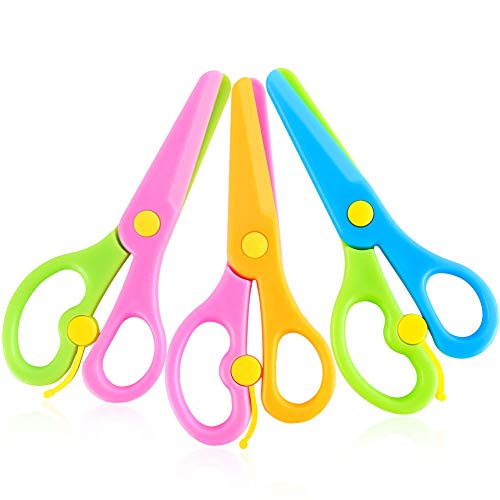Introduction
When it comes to individuals with disabilities, finding suitable tools and equipment can sometimes be challenging. Safety scissors, for example, are commonly used in schools and households to ensure the safety of children while cutting paper and other materials. However, for individuals with disabilities, safety scissors may not always be the best option. In this article, we will explore some alternatives to safety scissors that can better accommodate the needs and abilities of individuals with disabilities.
Adaptive Scissors
Adaptive scissors are specially designed tools that can be used by individuals with disabilities. These scissors often have larger handles that are easier to grip, making them suitable for individuals with limited dexterity or strength in their hands. Some adaptive scissors also have lightweight blades that require less effort to cut, allowing individuals with weakened muscles to use them more easily. Adaptive scissors come in various shapes and sizes, catering to different needs and abilities. They can be particularly useful for individuals with conditions such as cerebral palsy or arthritis.
Electric Scissors
Electric scissors are another alternative to traditional safety scissors that can be helpful for individuals with disabilities. These scissors operate using electrical power, eliminating the need for manual cutting motion. Electric scissors are often battery-operated, cordless, and lightweight, making them convenient to use and carry around. They can be particularly beneficial for individuals with limited hand strength or coordination. Additionally, electric scissors can reduce the risk of accidental cuts or injuries as they require less force to cut through materials.
Adaptive Cutting Tools
Besides scissors, there are other adaptive cutting tools available that can provide alternatives to individuals with disabilities. Some examples include:
- Rotary Cutters: Rotary cutters consist of a rotating blade and are commonly used in sewing and quilting. They require less hand strength and can cut through different materials with ease. Rotary cutters can be suitable for individuals with limited hand mobility or control.
- Paper Trimmers: Paper trimmers are stationary tools that use a sharp blade to cut paper in straight lines. These tools often have guides and measurements for precise cutting, making them suitable for individuals who require assistance in holding or maneuvering scissors.
- Guillotine Cutters: Guillotine cutters are designed for cutting through thicker materials such as cardboard or foam. They have a large lever arm that requires less effort to operate compared to traditional scissors. Guillotine cutters can be beneficial for individuals with limited hand strength or dexterity.
Adaptive Apps and Assistive Technology
In today’s digital age, there are also adaptive apps and assistive technology available that can assist individuals with disabilities in cutting and crafting. These apps and technology can be used on smartphones, tablets, or computers, providing a virtual cutting experience. Some apps allow individuals to trace lines on the screen, simulating the cutting motion, while others use voice commands or alternative input methods for cutting. These technologies can be particularly helpful for individuals with severe physical disabilities or those who prefer digital alternatives to physical tools.
While safety scissors are commonly used in schools and households, they may not always be suitable for individuals with disabilities. Thankfully, there are various alternatives available that can accommodate different needs and abilities. From adaptive scissors to electric scissors, adaptive cutting tools, and even adaptive apps and assistive technology, individuals with disabilities can find options that empower them to develop their cutting skills and engage in creative activities.






